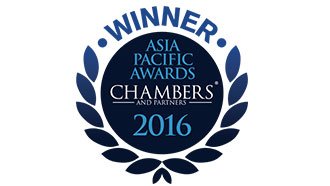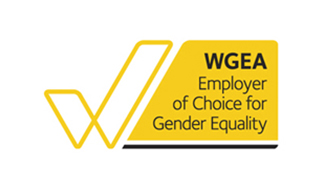To print this article, all you need is to be registered or login on Mondaq.com.
A number of developments in the domain name licensing space mean that businesses will soon have a greater choice of Australian domain names at their fingertips, however, they will need to consider the relevant eligibility and allocation criteria before diving in.
Importantly, domain name registrants that have previously been eligible to hold an Australian domain name may find that they are no longer eligible to hold such domain names. In these circumstances, existing registrants should consider taking proactive steps in order to retain their entitlement to a particular domain name. Alternatively, in cases where a domain name registration is to be allowed to lapse, those registrants should be aware of the dispute process under the ‘.au Dispute Resolution Policy’ (auDRP) which may be used to prevent third parties from keeping lapsed domain names that have been opportunistically taken.
Overview
The ‘.au Domain Administration’ (auDA) has announced that .au ‘Direct’ domain names (.au Direct Domain Names) will be available from 24 March 2022. This is the first time that Australians will be able to register a domain name directly followed by .au – for example, corrs.au or stateoftheart.au. This announcement comes almost a year after the auDA announced its revised licensing rules (.au Licencing Rules) for .au country code top-level domains – for example, .com.au and .net.au (.au Domain Names). By introducing stricter licencing requirements, the revised rules aim to ensure that .au Domain Names are reserved for those with Australian businesses or genuine connections to Australia. This article provides an overview of the .au Licencing Rules and launch of .au Direct Domain Names, including the key implications and how the regimes can be expected to interplay.
The .au Licensing Rules
The .au Licencing Rules came into force on 12 April 2021, in effect limiting who is eligible for .au Domain Names (eligibility criteria) and what .au Domain Name that they are able to licence (allocation criteria).
Under the new rules, new and existing registrants (who are seeking to renew or transfer an existing .au Domain Name) must establish that they have an ‘Australian presence’ and meet specific allocation criteria in order to hold a .au Domain Name.
Interestingly, the allocation criteria for .au Domain Names is dependent on which eligibility criteria is relied upon in satisfying the ‘Australian presence’ requirement:
Eligibility based on Australian trade marks
One of the simplest ways for a foreign entity to satisfy the ‘Australian presence’ requirement is to hold an Australian trade mark registration or application which is an ‘exact match’ to the domain name sought. ‘Exact match’ requires the domain name to be identical to the words contained in the Australian trade mark. The domain name must also include all the words, appearing in the same order, as the Australia trade mark application – excluding punctuation, ampersands and articles such as ‘a’, ‘the’, ‘and’, ‘or’ or ‘of’.
For example, eligible domain names being an ‘exact match’ for the Australian trade mark STATE OF THE ART would include:
- stateoftheart.com.au; and
- stateart.com.au.
An example of an ineligible domain name would be state.com.au or art.com.au.
Other eligibility criteria
If an applicant does not hold an Australian trade mark which is an exact match for the .au Domain Name sought, there are various other ways to satisfy the Australian presence requirement.1 Key examples of those who would satisfy the requirement include a commercial entity that is:
- a company registered under the Corporations Act 2001 (Cth);
- an entity issued with an Australian Business Number; or
- a partnership under the relevant Australian state or territory law.
If one of the above criteria are relied on, the applicant will be eligible to hold a .au Domain Name if the domain name sought is:2
- a match for, or an acronym of, the company name, registered business name or their personal name (Applicant Name);
- a match of the person’s Australian trade mark; or
- a match or synonym of the name of a service, good, event, activity or premises provided by the applicant.
In this context, ‘match’ (as opposed to ‘exact match’) means the domain name being applied for is identical to one, some or all of the words or numbers used in the Applicant Name or Australian trade mark – again, in the same order as they appear in the Applicant Name or Australian trade mark without including any additional words or numbers.
For example, eligible domain names being a ‘match’ for an Applicant Name or Australian trade mark for STATE OF THE ART would be:
- state.com.au;
- art.com.au.
An example of an ineligible domain name would be artstate.com.au.
Upcoming launch of .au Direct Domain Names
From 24 March 2022, potential and existing registrants will be able to apply for .au Direct Domain Names through auDA accredited registrars.
Unlike existing .au Domain Names that are subject to the strict allocation criteria set out above, new .au Direct Domain Names do not need to match the applicant’s name, trade mark or a service, good, event, activity or premises provided by the applicant. Applicants must meet the same eligibility criteria (i.e. the ‘Australian presence’ requirement), however are otherwise free to register any available .au Direct Domain Name (provided it complies with Australian law and meets the relevant syntax requirements).3
Registrants of domain names in an existing .au namespace (e.g. com.au and org.au) will be able to apply for ‘priority status’ to register the exact match of their existing .au Domain Name as a new .au Direct Domain Name between 24 March 2022 and 24 September 2022 (the Priority Allocation Period).4 Importantly, at the time of applying for the matching .au Direct Domain Name, eligibility to hold the corresponding existing .au Domain Name is required.
There are two ‘priority status’ categories depending on whether the existing .au Domain Name was created on or before 4 February 2018 (Category 1) or after 4 February 2018 (Category 2). In circumstances where more than one applicant is eligible to claim priority status for the same .au Direct Domain Name (e.g. the existing registrants of you.com.au and you.org.au), the allocation is determined as follows:
- Category 1 applicants have priority over Category 2 applicants;
- between multiple Category 1 applicants, those applicants must engage in direct negotiations and agree on the allocation. If no agreement is reached, the .au Direct Domain Name remains unallocated; and
- between multiple Category 2 applicants, the .au Direct Domain Name is allocated to the applicant with the earliest created existing .au Domain Name.
If no priority status is claimed by the end of the six-month Priority Allocation Period, the .au Direct Domain name becomes publicly available on a ‘first come, first served’ basis. As to disputes in respect of .au Direct Domain Names, parties will be able to file a dispute pursuant to the auDRP or a complaint with auDA under the .au Licensing Rules in the usual manner.
Key takeaways
In light of the interaction between the new .au Licensing Rules and the launch of the .au Direct Domain Namespace, existing and potential .au Domain Name registrants should note that:
- Registrants of existing .au Domain Names need to review current registration details to confirm that they remain eligible to hold their existing .au Domain Name. Otherwise, their .au Domain Name may be vulnerable to cancellation or revocation pursuant to the new .au Licensing Rules (particularly at the next renewal or transfer date). Ongoing eligibility would also allow the registrant to claim priority for a corresponding .au Direct Domain Name (if desired). In circumstances where a registrant is no longer eligible to hold an existing .au Domain Name, those registrants should consider whether to:
- Take proactive steps to retain their .au Domain Name registration, for example by:
- updating any related trade mark application or Australian Business Name registration relied upon to meet the criteria;
- applying to register a trade mark that is an ‘exact match’ of the .au Domain Name; or
- if an Australian trade mark had been relied on to satisfy the ‘Australian presence’ requirement, considering alternative ways to satisfy that requirement (e.g. by transferring the .au Domain Name to a related Australian entity).
- Allow the .au Domain Name registration to lapse. In addition, should an opportunistic third party register the (lapsed) domain name in the future, seek advice as to the prospects of relying on the auDRP dispute process to recover (or seek cancellation of) the domain name.
- Take proactive steps to retain their .au Domain Name registration, for example by:
- Existing .au Domain Name registrants who are interested in registering a corresponding .au Direct Domain Name should ensure that they are eligible to do so, and apply during the six-month Priority Allocation Period. If not, the ‘priority status’ is lost and the .au Direct Domain Name is made available to the public for registration on a ‘first come, first served’ basis.
- Any business or person wishing to build or expand their an online presence in Australia should consider applying for a .au Direct Domain Name. This offers broader options as they are subject to eligibility criteria (i.e. the ‘Australian presence’ requirement) but not the strict allocation criteria around what .au Direct Domain name can be chosen.
Footnotes
1 See .au Domain Administration Rules: Licensing (16 February 2021), definition of ‘Australian presence’.
2 Les Laboratoires Servier v Apotex Pty Ltd [2013] FCA 1426 [179].
3 Ibid r 2.6 (‘reserved names’).
4 auDA, The priority allocation process, https://www.auda.org.au/au-domain-names/au-direct/priority-allocation-process.
The content of this article is intended to provide a general guide to the subject matter. Specialist advice should be sought about your specific circumstances.
 |
 |
| Chambers Asia Pacific Awards 2016 Winner – Australia Client Service Award |
Employer of Choice for Gender Equality (WGEA) |





